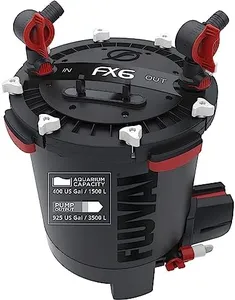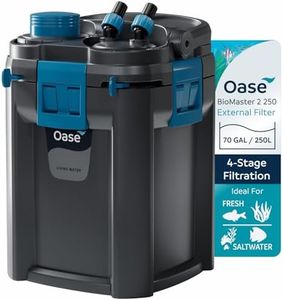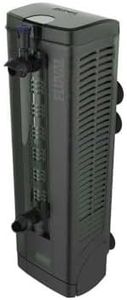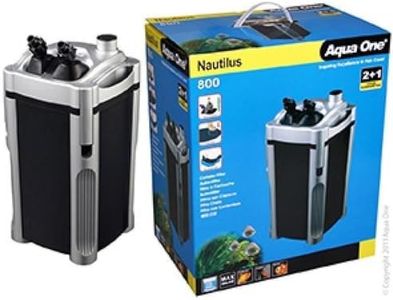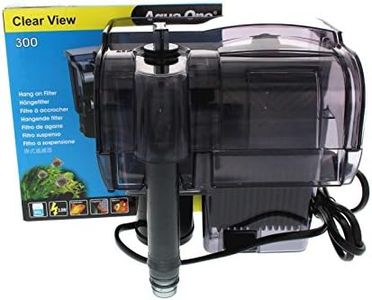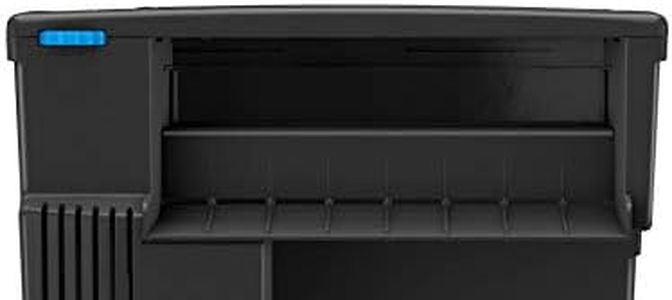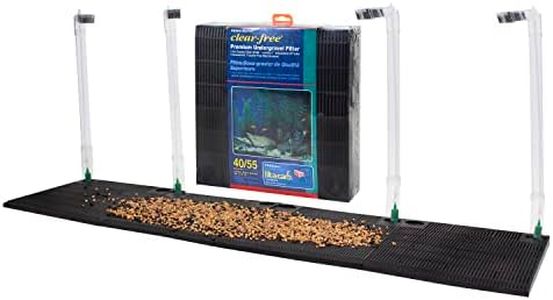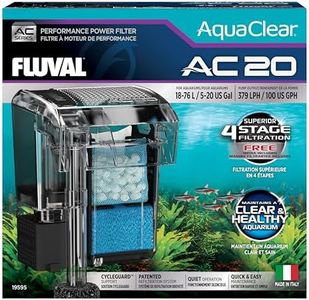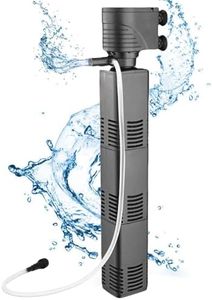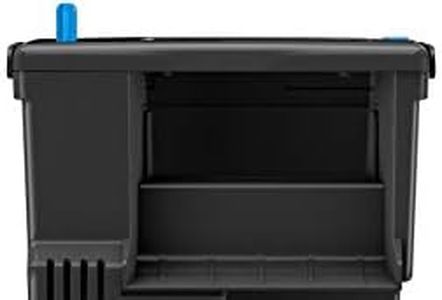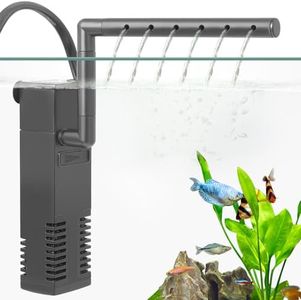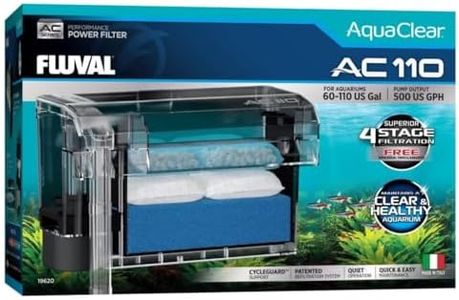We Use CookiesWe use cookies to enhance the security, performance,
functionality and for analytical and promotional activities. By continuing to browse this site you
are agreeing to our privacy policy
10 Best Saltwater Fish Tank Filter
From leading brands and best sellers available on the web.Buying Guide for the Best Saltwater Fish Tank Filter
Choosing the right filter for your saltwater fish tank is essential for keeping your aquatic environment clean, healthy, and stable. A filter does much more than just keeping water clear—it removes toxins, provides a place for helpful bacteria to grow, and keeps the water moving. When picking a filter, you must look at several key aspects to ensure it fits the needs of your specific tank and the creatures living in it.Filtration TypeFiltration in saltwater tanks is generally divided into three kinds: mechanical, biological, and chemical. Mechanical filtration physically removes debris and particles from the water, biological filtration houses good bacteria that break down harmful toxins, and chemical filtration uses media to take out impurities and odors. A good filter should ideally offer all three types in balance. Mechanical-only filters are good for tanks with low animal loads or as an extra step. Biological filtration is essential for a healthy saltwater tank, while chemical filtration is especially helpful if you want extra clarity or need to remove specific substances. Choosing the right filtration types depends on your tank’s size, the number of fish, and your maintenance habits.
Flow Rate (GPH/LPH)Flow rate is a measure of how much water the filter moves in an hour, usually shown as gallons per hour (GPH) or liters per hour (LPH). For saltwater tanks, you generally want the filter to turn over the tank’s water volume 5–10 times an hour for fish-only setups, and even higher for tanks with corals or live rock. Lower flow rates are generally enough for lightly stocked tanks or delicate fish, but higher flow rates are needed for larger tanks, tanks with lots of fish, or tanks that tend to get dirty fast. The right flow rate ensures all water passes through the filter often enough to keep it clean and well-oxygenated.
Filter Media CapacityFilter media capacity refers to how much space the filter has to hold different types of filtration media (like sponges, biological rings, or activated carbon). More capacity means you can use a mix of filtration types and change them as needed for your tank’s health. For fish-only or smaller tanks, less media is often fine, while larger or mixed tanks benefit from filters that let you customize or increase the amount of media inside. Pick based on your stocking plans and how hands-on you want to be with maintenance and water quality.
Ease of MaintenanceMaintaining your filter keeps your tank healthy, but some filters are much easier to work with than others. Look for easy-to-open designs, simple media replacement, and clear instructions. If you pick a filter that is complicated or hard to access, you might skip maintenance—leading to poor water quality. Simple is usually better, especially for beginners or those without much time. Choose a filter that matches how often you’re willing to clean and maintain it.
Noise LevelFilter noise can be a big factor, especially if your tank is in a quiet part of your home. Some filters are engineered to be very quiet; others might hum or gurgle. If you’re sensitive to noise, look for reviews and product info mentioning quiet operation. Hang-on-back and canister filters vary widely in noise levels—aquarium location and your noise tolerance will guide your best fit.
Size and Tank CompatibilityThe filter must fit your tank physically and be rated for its water volume. Larger tanks need bigger, stronger filters with higher flow rates, while small tanks need smaller units to avoid excessive flow. Also, make sure the filter’s dimensions will fit the space around or inside your tank, especially if you have a lid or other equipment. Choose based on tank size, setup space, and your aquarium’s shape.
